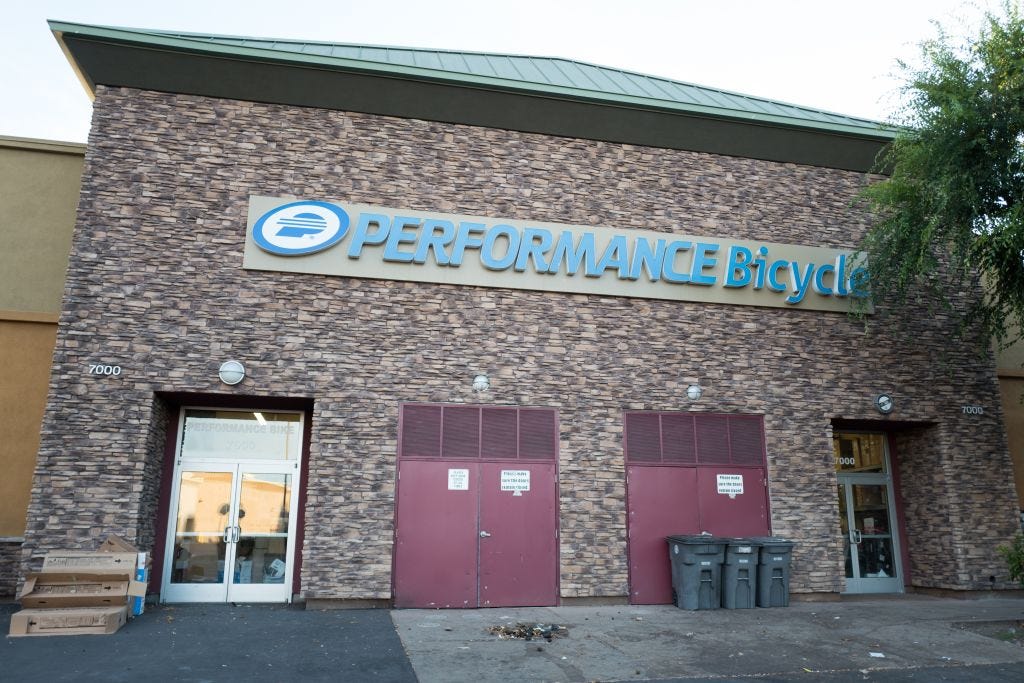You were young (or not) and poor. Your local bike shop carried only the most basic stuff. If it was a Schwinn dealer, it might’ve had a Super Sport, or even a Sports Tourer/Superior on its showroom floor. But if you wanted a Paramount—or, perhaps, a Superior/Sports Tourer—it had to be ordered. Ditto for any bike lighter and more refined than, say, a Raleigh Grand Prix or Peugeot UO-8. Likewise, the shop might’ve had a Campagnolo derailleur in its showcase, but if you wanted other Campy parts—or even, sometimes, a SunTour VGT derailleur—the shop had to send for it.
Many of us lived and cycled in the circumstances I’ve described during the ‘70s Bike Boom and its aftermath. Online retailing was a quarter-century in the future. So the only alternative to brick-and-mortar stores (which some cyclists, mainly in rural areas, didn’t have) was mail-order catalogues.
Even during what Sheldon Brown has called the “Dark Ages” of US cycling (roughly two decades after World War II) mail-order companies like Cyclopedia catered to the relatively small and scattered community of American cycle enthusiasts. But, perhaps not surprisingly, many new mail-order retailers began during the Bike Boom. Some were started by entrepreneurs who saw an opportunity; others were cycling enthusiasts for whom quality bikes, parts and accessories were either unavailable or very expensive at local shops—if indeed there were any.
Arnold “Arni” Nashbar was a cross between the two types of mail-order pioneers I’ve described. He had a background in advertising and marketing that, arguably, began when he sold T-shirts he airbrushed to finance his education at the Cleveland Institute of Art and Youngstown State University.
 |
| Arnold “Arni” Nashbar |
He and his wife loved cycling. It was that passion, he said, that led them to form Bike Warehouse, which later became Bike Nashbar.
The original name offered a clue as to why he could offer merchandise many brick-and-mortar shops didn’t or couldn’t, and why his prices, even with shipping costs, were often considerably lower. He and other mail-order companies like Bikecology (which became Supergo) and Performance had warehouses, which allowed them to buy in much greater volume than any local shop could. That purchasing power also enabled the mail-order companies to offer items, mainly high-end, most shops couldn’t. For example, Bike Warehouse/Nashbar could buy crates full of Campagnlo, and SunTour parts, or Mavic and Super Champion rims, whereas the friendly neighborhood shop could afford to keep one or two of any such items in stock.
Of course shop owners hated mail-order companies, just as they hate online retailers, because they couldn’t hope to match their prices. (Most shops have survived, then and now, by doing repairs.) But shop owners I’ve known and worked for have said they “can’t blame” people for buying online.
One reason I looked forward to getting catalogues—apart from prices—was that they offered glimpses at stuff I might not see in local shops. Even if I had no intention to buy or ride them, it was fun to see the “screwed and glued” Alan frames and ultra-light parts from cottage industries like Hi-E.
Bike Warehouse seemed to have a particular penchant for highlighting such items. But most of all, I eagerly awaited those Bike Warehouse catalogues because, shall we say, they had a particular charm evidenced by a page from this 1976 edition.
Oh, and it was printed on newsprint, in all of its black-and-white glory. When I learned of Arni’s background, I wasn’t surprised.
But surprised I was to learn of his passing last Saturday. Surprised in the sense that one is upon learning of someone’s death. Then again, he lived 83 years, which is a bit older than a typical American lifespan. And, to be fair, his legacy includes what he did to support cycling in his native Ohio and the US, and charity work.
But if anyone mentions him, I probably will think of those catalogues before anything else.



